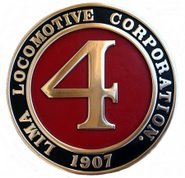Steaming toward El Dorado
County Supervisors approve concept plan for El Dorado County railroad park
By Keith Berry, President
The long awaited moment has now occurred. The El Dorado County Railroad Park concept plan has been approved!
Over the past years, we have searched for a site to establish exhibit and operational trackage for our rail logging artifacts. Several sites were evaluated but could not be developed for a variety of reasons.
 Our growingly difficult challenge was to locate a site where the local community would support our plan, and a site with rail in place to shorten the development timeframe.
Our growingly difficult challenge was to locate a site where the local community would support our plan, and a site with rail in place to shorten the development timeframe.The site would also require public access, be close to U.S. Highway 50, yet be reflective of a pastoral setting reflective of the age of logging railroad activity in El Dorado County.
Such a site was found along the old Southern Pacific Placerville Branch adjacent to the township of El Dorado, now designated as a transportation corridor featuring multiple recreational formats.
During the summer months, we worked with our Museum Director Mary Cory to assemble our concept plan including a detailed site plan drawing by Harold Kiser. During August, this plan was carried thru the Joint Powers Authority and the County Board of Supervisors by Supervisor Jack Sweeney.
Final plan development was assigned to the County Department of Transportation for survey work, utility verification, road access evaluation, and coordination with other corridor recreational stake holders including trails and visiting rail groups.
Given full support by the community, recreation commission, and trails groups, approval was achieved with unanimous votes! A vital resource was the concept watercolor volunteered by ANOVA Architects.
While all this was going on, we had the opportunity to "glean" the rail materials from the old Diamond Springs Yard, adjacent to Missouri Flat Road. This project permitted the reuse of approximate three-fourths of a mile of track and switches at El Dorado, and cleared the area for public trail development along the right of way to the east.
A tremendous effort was put forth by all volunteers and friends to accomplish the disassembly and transport of tons of materials in the course of several weeks during the dog day heat of summer.
Thank you to all who came to work and kept with it until this valuable inventory was protected and protected for the future recreational benefit of our community.
Currently, we are waiting for a property survey to verify the actual boundary lines, this very much in our favor to recover the entire right of way to public use. The fire season is almost over; we can then address the current unkept weedy nature of the area.
Railroad work will commence with replacement of rotted ties along a 1,500-foot section north from the old station site, this to allow use in 2010.
As this work will soon commence, while we continue to restore equipment, we encourage all volunteer support, we need your help in a variety of ways.
Our moment has arrived!




